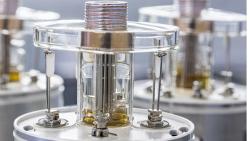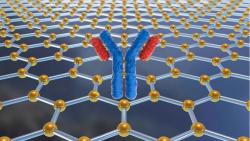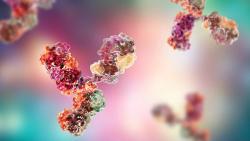
OR WAIT null SECS
- About Us
- Advertise
- Editorial Information
- Contact Us
- Do Not Sell My Personal Information
- Privacy Policy
- Terms and Conditions
© 2024 MJH Life Sciences™ and BioPharm International. All rights reserved.
Considerations in Identification and Qualification of Spectrophotometer Equipment for Microbial Fermentations
The authors outline qualification procedures for a process-critical piece of equipment.
ABSTRACT
Biotechnology processes depend on key equipment to aid in process decisions. The lifespan and support period for equipment can sometimes come to an end in the midst of commercial production. When this happens, alternative equipment must be identified and qualified to replace the original equipment without impacting the process outputs. This article provides the approach used during a recent exercise to identify a replacement spectrophotometer used to make process decisions for microbial fermentations. Three spectrophotometer models were tested in these experiments. First, instrument and process linear ranges were determined for each spectrophotometer. Next, a calibration model (margin of error) was used to determine the accuracy and precision of each spectrophotometer. These results were used to select the replacement spectrophotometer. Finally, the selected spectrophotometer was evaluated in bench-scale fermentations in order to confirm the capability of the instrument to serve as a viable replacement.
Spectrophotometers measure optical density (OD) at a particular wavelength, and are used in microbial fermentation processes to monitor culture growth, make process decisions (e.g., initiate feeds and induce production at specified OD), and to measure performance parameters (final OD). With the current company-wide platform spectrophotometer (Model A) being phased out by the vendor, the authors set out to identify a replacement spectrophotometer for microbial fermentation processes. Ideal characteristics for the replacement spectrophotometer included the following:
- An expanded measurement linear range relative to Model A.
- Minimal to nonexistent bias relative to the OD output of Model A.
- Similar or better measurement precision relative to Model A.
The second criterion was especially important because the replacement would then be "like-for-like," meaning that minimal updates to existing manufacturing procedures and process-related documents would be required.
MATERIALS AND METHODS
Spectrophotometer technical specifications
Three test spectrophotometers, manufactured by different vendors, were evaluated. Table I compares the technical specifications of the test spectrophotometers (Models B, C, and D) to those of the current spectrophotometer (Model A).
Table I: Technical specifications of test spectrophotometers.
Spectrophotometer models A and C have a tungsten/deuterium light source that provides continual reading of sample absorbance. Model C is the next generation model of spectrophotometer to Model A. Spectrophotometer models B and D use a xenon light source that does not continually read the sample absorbance, and operate by a press-to-read method. All spectrophotometers have a small footprint, which is desired because of space constraints in large-scale manufacturing areas. The normalized model A linear range is 0.2–1.6 dilution OD.
Spectrophotometer test solutions
National Institute of Standards and Technology (NIST) OD standards were purchased from GFS Chemicals in the 0.2–12.0 normalized OD test range. NIST OD standard solutions were used to determine the instrument linearity of each spectrophotometer.
Culture broth samples were taken from bench-scale, fed-batch fermentations using an Escherichia coli expression system. The process linearity experiment samples were frozen prior to testing to allow all samples to be analyzed at one time. All dilutions were performed using a saline diluent.
EXPERIMENTAL APPROACH
Figure 1 shows the multiphase experimental strategy used to screen, select, and qualify the new spectrophotometer. The first set of experiments determined the linear range of each spectrophotometer. Linear range testing was performed in three parts, including: instrument linear range determination, spectrophotometer accuracy and precision testing, and process linear range determination.
Figure 1: Spectrophotometer screening, selection, and qualification experiments. (ALL FIGURES COURTESY OF THE AUTHORS)
The instrument linear range was determined by measuring NIST standard solutions over the normalized range of 0.2–12.0 OD, regressing the measured OD to the NIST OD standard values, and reducing the range until the statistical lack-of-fit test against a quadratic model had a p–value >0.05. A calibration model (see below) was then performed using inputs from the instrument linear range testing to assess the accuracy and precision of each spectrophotometer in the measurement of NIST OD standards over the instrument linear range.
Process linear range was determined by measuring a variety of dilutions of fermentation culture broth samples taken from multiple time points across the fermentation. The process linear range for each sample point was estimated by visual inspection of calculated actual OD (dilution factor times dilution OD) linearity when plotted against the dilution OD range. The output of these experiments led to setting an overall linear range for each spectrophotometer acceptable for use in microbial fermentation processes.
In the second set of experiments, the accuracy and precision of spectrophotometer models B, C, and D were assessed in comparison to those of Model A using a calibration model. The inputs of the calibration model included culture broth dilution OD sample measurements from each spectrophotometer from multiple time points across fermentations. The output of the accuracy and precision testing was the basis for selecting the replacement spectrophotometer.
Following spectrophotometer selection, bench-scale fermentations were conducted to confirm that process decisions based on the replacement spectrophotometer resulted in similar process performance as did the Model A spectrophotometer.
Calibration model analysis
The accuracy and precision of the spectrophotometers relative to either the NIST OD standard or to the Model A OD were assessed using a calibration model (1). This analysis was performed by regressing the measured value of a sample from a given spectrophotometer (Y) against the true standard value (either the NIST OD standard value or Model A value, X) (see Figure 2). From this model, both the accuracy (bias) and the precision can be estimated for each spectrophotometer using a 95% confidence interval.
Figure 2: Graphical representation of the calibration model.
RESULTS AND DISCUSSION
Instrument linear range determination
Figure 3 shows the regression of measured OD versus NIST Standard OD for each spectrophotometer. Using the reduced regression models, the instrument linear range was set for each spectrophotometer (see Figure 3). The instrument linear range of Models A, B, and C were comparable, whereas the linear range of Model D was reduced.
Figure 3: Regression of measured optical density (OD) versus National Instiutes of Standards and Technology (NST) standard OD used to determine instrument linear range.
Accuracy and precision of NIST OD standard measurement
Fermentation samples are more variable than standard OD solutions. Therefore, it was necessary to determine the fermentation process linear range using each spectrophotometer. A calibration model assessed the accuracy and precision of the spectrophotometers to measure NIST OD standards over the common instrument linear range of 0.2–4.0 OD. Figure 4 shows the precision and accuracy of each spectrophotometer relative to the NIST OD standard values. Each spectrophotometer precisely measured the NIST OD standards over the linear range, as represented by small vertical bars. However, the measurement accuracy to the NIST OD standard values varied across the linear range. Model A had the highest accuracy and best matched the value of the NIST OD standard values. Model B and C had slightly less accuracy, and the predicted values were slightly higher than the NIST OD standard values at the high end of the linear range (2.8–4.0 OD). Model D diverges from the value of the NIST OD standard values at 1.2 through the linear range up to 4.0 OD.
Figure 4: Calibration model of each spectrophotometer to National Institute of Standards and Technology (NIST) OD standards performed over the normalized linear range of 0.2â4.0 dilution OD.
Process linear range determination
Process linear experiments were performed on samples at the start of feed, start of induction, and final OD. Figure 5 shows a representative example of this analysis. For visual reference, Figure 5 shows the average Model A data within the current historical linear range (0.2–1.6 OD ± 1 standard deviation). These data show an expanded actual OD linear range (0.2–6.0 dilution OD) for Models A, B, and C. Model D showed a reduced actual OD linear range (0.2–4.0 dilution OD), and an offset of measurement accuracy compared with the other spectrophotometers tested.
Figure 5: Process linearity assessment using whole broth samples.
Linear range summary
Overall spectrophotometer linear range was set based on the instrument and process linear ranges. Spectrophotometer Models A, B, and C had high precision, accuracy, and similar process linearity from 0.2 up to 6.0 dilution OD. These spectrophotometers also had high instrument linear ranges up to 11.2 OD. As a result, the overall range for these spectrophotometers was conservatively set to 0.2–4.0 dilution OD which was greater than the historical Model A linear range of 0.2–1.6 dilution OD.
Model D had high precision and acceptable process linearity over the range of 0.2–4.0 dilution OD. However, the accuracy of this spectrophotometer to measure NIST standards and whole broth samples was lower. Therefore, the Model D linear range was conservatively set to 0.2–1.2 dilution OD. For consistency, all spectrophotometers continued to be assessed over the expanded linear range of 0.2–4.0 dilution OD.
New spectrophotometer selection
Figure 6 shows the precision and accuracy of each test spectrophotometer compared with the Model A spectrophotometer. Model B had the highest precision and accuracy relative to Model A measurements over the 0.2–4.0 dilution OD range. Model C had similar precision to Model B, but had lower accuracy compared to Model A from 1.6–4.0 dilution OD. If the process linear range of 0.2–4.0 dilution OD was used, Model C would need a correction factor as part of the sample measurement, which is not desired. However, operating at a reduced process linear range of 0.2–1.2 dilution OD would be acceptable as it would not require a correction factor. Finally, the precision and accuracy of Model D relative to Model A were poor across the entire dilution OD range tested. The poor performance for both precision and accuracy of this spectrophotometer made it an undesirable option for replacing the Model A spectrophotometer.
Figure 6: Calibration model of the test spectrophotometers to the Model A dilution OD over the normalized linear range of 0.2â4.0 dilution OD.
The output of the calibration model of the test spectrophotometers compared to the Model A spectrophotometer showed that the Model B spectrophotometer best matched the precision and accuracy over an expanded linear range of 0.2–4.0 dilution OD. Therefore, Model B was selected as the new spectrophotometer to replace the Model A spectrophotometer.
Bench-scale Fermentation Confirmation Runs
Bench-scale fermentations were performed to test the ability of the Model B spectrophotometer to mimic the Model A spectrophotometer during a fermentation run. Figure 7 shows that similar growth profiles were achieved when the fermentation was controlled using the Model A and B spectrophotometers. Additionally, the production operating parameters, time-to-feeds, start, and induction, were comparable and indicated equivalent performance.
Figure 7: Bench-scale production fermentation growth profiles comparing Model A and Model B spectrophotometers.
CONCLUSIONS
The instrument linear range using NIST OD standard solutions was higher than that observed for the process linear range for all spectrophotometers. Therefore, a conservative linear range based on the process linear range was set for each spectrophotometer. Models A, B, and C had a linear range of 0.2–4.0 dilution OD and the Model D had a reduced linear range of 0.2–1.6 dilution OD.
Model B was the most accurate and most precise spectrophotometer relative to the Model A spectrophotometer over the linear range of 0.2–4.0 dilution OD. No correction factor was required for this spectrophotometer.
Model C had high precision but reduced accuracy across the linear range compared to Model B when predicting the Model A OD. Therefore, this spectrophotometer would require a correction factor or a reduced linear range to be used as a replacement in fermentation processes.
Model D did not have sufficient accuracy or precision relative to Model A OD, and was not desirable as a replacement spectrophotometer.
ACKNOWLEDGMENTS
The authors would like to thank Bill Wagner for troubleshooting and experimental design support, and Valerie Pferdeort for assisting with sample analysis during experiments.
Carin Gray* is a senior associate scientist, Rick Burdick, PhD, is principal quality engineer, and Arun Tholudur, PhD, is principal engineer, all at Amgen, Longmont, CO, caring@amgen.com.
REFERENCE
1. J. Neter et.al., Applied Linear Statistical Models, Fourth Edition, (McGraw Hill/Irwin 1996) pp. 167–169.



